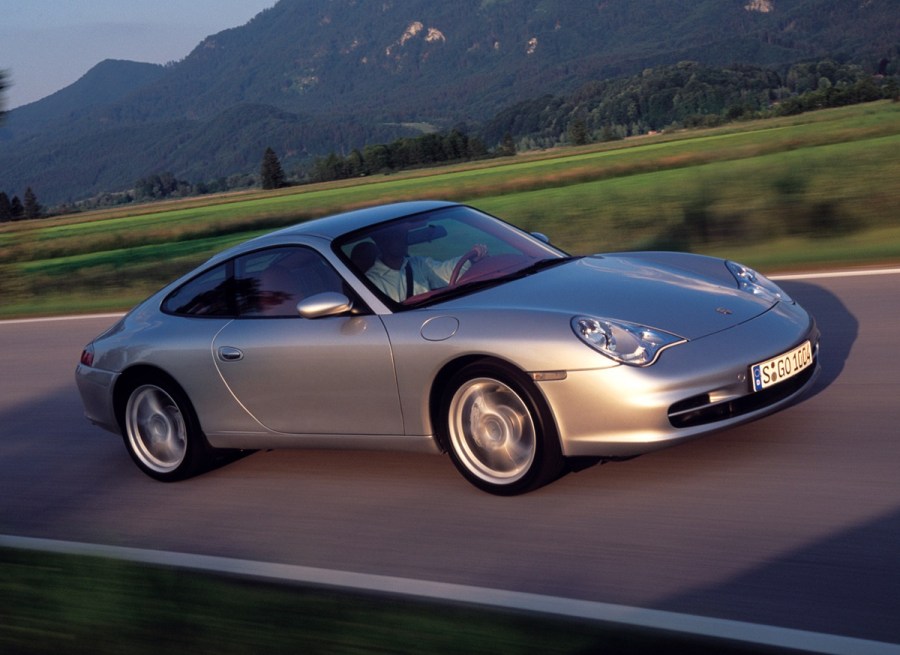These once-divisive 911s are getting more and more desirable as cut-price used cars. If you want to hop into one, here’s our Porsche 911 Carrera 996 buying guide.
Before the 996 was launched at the 1997 Frankfurt motor show, Porsche had stuck to a familiar recipe for its flagship sports model, namely a rear-mounted, air-cooled, flat-six engine, with circular headlights and subtle incremental evolutions of the iconic silhouette; all of which had been cornerstones of the 911 model since the ‘60s. However, the 996 saw Porsche throw out the old rule book and come up with a radical rethink of what the 911 would now be about.
Hand-building was out and mass-production was in, as was sharing a platform with the new entry-level 986 Boxster model, as well as many components, including a sleeker outline with unique headlights that many felt resembled fried eggs. It also came equipped with an all-new water-cooled 3.4-litre flat six engine. These changes were vital to both reduce production costs and modernize the 911 to compete with its rivals and meet ever-stricter emissions and noise regulations, but they angered many die-hard Porsche enthusiasts who didn’t feel the 996 was staying true to what the 911 was previously about. The reality was that times had changed and the 911 had to evolve too, if it, and the Porsche brand as a whole was to survive.
Ignore the nay-sayers, however, and what Porsche achieved with the 996 was remarkable. In fact, it remains the genesis of what the 911 model still is today.
996 model history and design
The first 996 models were built from 1998 to 2001, while a facelift model – recognizable by more aggressively-styled tear-drop headlights to help differentiate from the lower Boxster models – arrived in 2002, adding further upgrades to the engine (including an increase in displacement to 3.6-litres), brakes and suspension as well as the styling and continued until it was replaced with the 997 in 2005.
Longer, wider, lighter and stiffer than the 993 it replaced, the 996 also upped the stakes in the interior ergonomics department, with a much improved pedal position, more space, better heating and an enhanced instrument layout. The water-cooled M96 engine was more powerful too, although stories of failed IMS bearings and bore-scoring hampered its perceived reliability and added fuel to the purist’s dislike of the 996. Transmission options were either a six-speed manual or five-speed Tiptronic automatic.
The model evolved throughout its eight-year lifespan, including new variants such as an electric-roofed cabriolet, a glass-roofed Targa and four-wheel drive models, the Carrera 4 and wide-body Carrera 4S – which were also available as a drop tops. Hardcore GT3, GT2, Turbo and Turbo S models were also added, upping the power and performance considerably with the use of the race-derived Mezger engine in both naturally-aspirated and forced induction variants.
Porsche 911 Carrera 996 Buying Guide
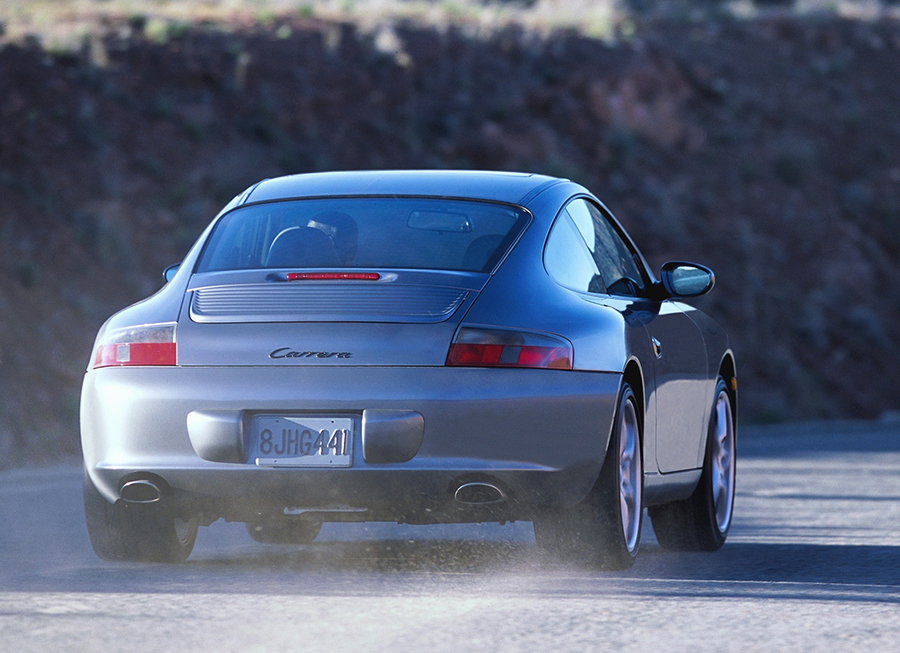
Most common problems
- Intermediate shaft (IMS) bearing failure – The IMS links the crankshaft with the overhead camshafts for each bank of cylinders. In some cases the IMS bearing can leak out its grease, which breaks up the bearing, jamming the shaft. This can then cause the cam chain to detach and destroy the engine.
- Cylinder bore scoring – bore scoring occurs when there is excessive friction and wear between the piston rings and the cylinder walls of an engine. This friction can lead to small scratches or scoring on the inner surface of the cylinder walls and similar damage to the pistons. If left unaddressed, cylinder bore scoring can result in reduced engine performance, increased oil consumption, and potentially more severe engine damage.
- Rear main seal failure – The rear main oil seals acts as a tool to keep all the oil secure within the crankcase and is a known weak point on 996s and leaks are not uncommon. Although the seal itself is an inexpensive part, labour for the replacement is costly because it is very difficult to access.
- Engine air-oil separator failure – The air-oil separator is designed to remove residual vapour inside the engine and channel it back into the intake manifold to help emissions. If it fails, the separator no longer only takes the residual air inside the engine, but also sucks up oil and puts it through the intake, causing smoke from the exhaust and rough running.
Pros
- Both early 3.4 and later 3.6-litre flat six engines sound incredible and produce strong power making even base model 996s seriously rapid machines
- Brilliant handling comes as standard but four-wheel-drive Carrera 4 models offer all-season practicality as well as stellar performance
- Sleek styling that is only getting better with age – especially the wide-bodied Carrera 4S models
Cons
- M96 engine can be prone to IMS failure and bore scoring, both of which involve very costly engine rebuilds if they occur
- Porsche tax – parts and servicing is always going to be expensive – it’s a Porsche after all!
- While ergonomically excellent, the interiors do feature an abundance of plastic which can scratch and look dated
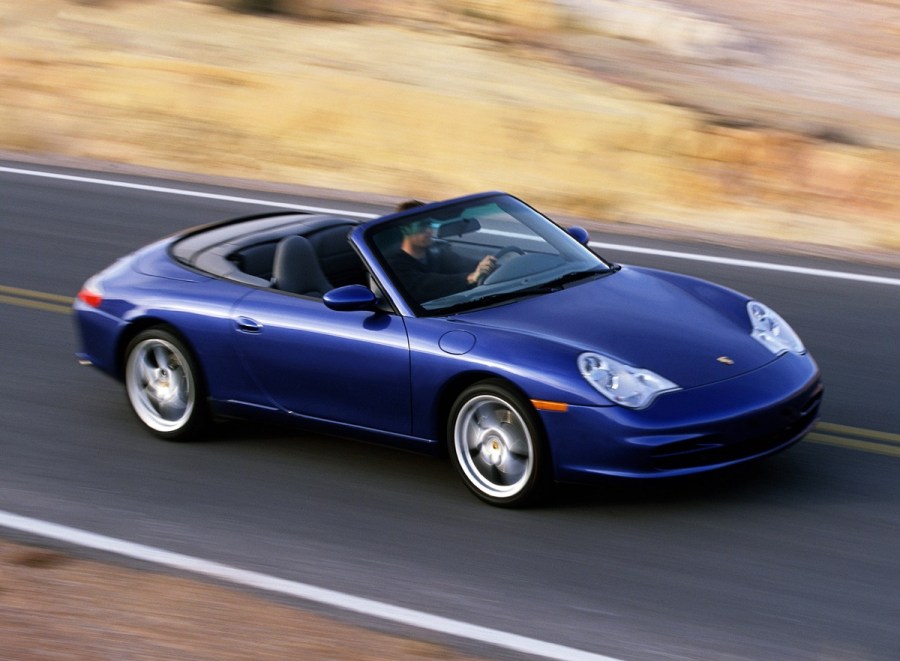
Model timeline
- 1997 – Launch of 996 generation 911 Carrera 2 at the Frankfurt motor show
- 1998 – 996 911 Carrera 2 models hit the streets, joined by Cabriolet later in the year
- 1999 – Four-wheel-drive Carrera 4 versions launched as well as hardcore Mezger-engined GT3
- 2000 – Wide arched Turbo model launched with turbocharged Mezger engine and four-wheel-drive
- 2001 – Frankfurt Motor Show debuted more powerful 3.6-litre engines and a change from ‘fried egg’ to ‘tear-drop’ style headlights, plus the arrival of the Carrera 4S, Targa and twin-turbocharged rear-wheel-drive GT2 model
- 2003 – Limited edition Carrera 40 Jahre released to celebrate the 40th anniversary of the 911
- 2004 – C4S Cabriolet released along with the Carrera 4S, Turbo Cabriolet, Turbo S and track-ready GT3 RS
- 2005 – 997 Carrera models replace 996 C2/4, but 996 C4S, Turbo, Turbo S and GT3 continue. At end of 2005 MY all 996 production ceases with more than 175,000 examples sold
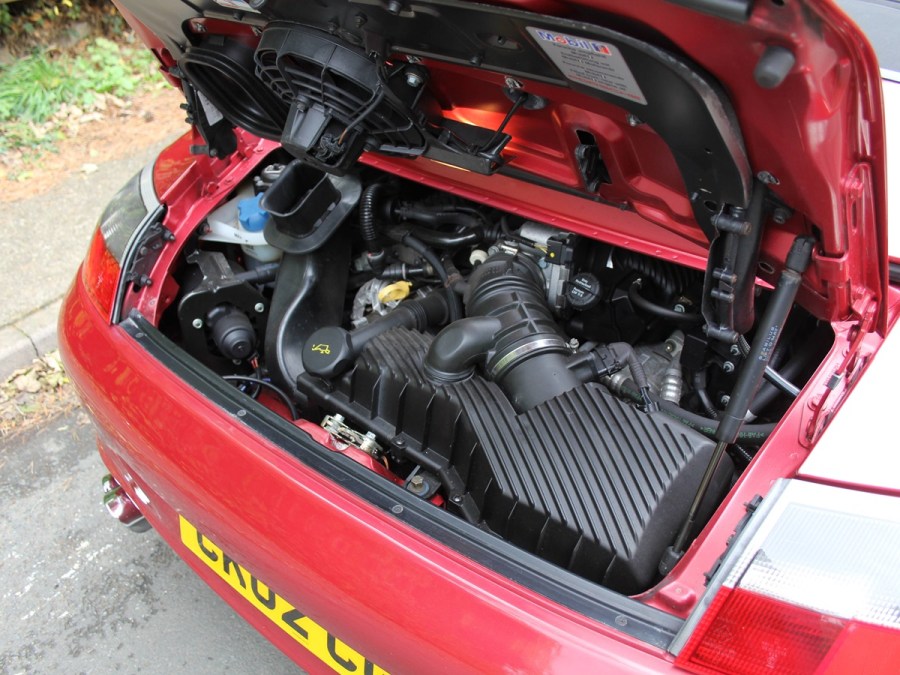
Engine
As the first 911 to feature water-cooling, early 996 Carrera’s utilized a 3.4-litre version of the M96 flat six engine generating 304bhp, this was enough grunt for a 0-62mph time of 5.2 seconds and 174mph flat out. This increased to 3.6-litres and 324bhp in 2002, dropping the standing sprint to 5.0 seconds and upping the top speed to 177mph. The performance stats quoted remained the same between the two-wheel drive Carrera 2 and its four-wheel-drive Carrera 4 cousin, as what the extra driven wheels added in weight, it made up for with improved traction.
Issues to watch out for
Although fairly robust if maintained correctly, the horror stories of expensive engine failures still haunt the M96 with IMS and RMS failures, as well as bore scoring and cracking still cropping up to cripple the bank balance of owners, with engine rebuild costs often spiraling to well over $10,000 / £10,000. Regular oil changes, inspections and replacing the IMS bearing with a dual row or uprated versions are the only ways to try and avoid these issues, but ultimately they can still occur, so remain vigilant.
When viewing a car you’d like to buy, look for signs of oil leaks, especially from the rear of the engine near the clutch, as well as smoke from the exhaust or overly-sooted tailpipes, as this could indicate the onset of bore-scoring. To be certain however, you will need the cylinders inspected with a bore-scope. Also, be sure to check the oil level and quality and ask to see proof of regular oil changes.
Another thing to consider when evaluating the health of a 911 engine is to check its rev range and fault code history with a diagnostic tool. As a sporty car it is common for periods of high revving, but any signs of over-revving, where the engine periodically revs faster than the rev-limiter would usually allow – by an ill-timed downshift, for example. – could highlight that some unseen damage has occurred. Ideally if the car has only a few of these instances and they have happened a long time ago, it should be ok, but anything within the last 50 hours of use could lead to problems developing further down the line.
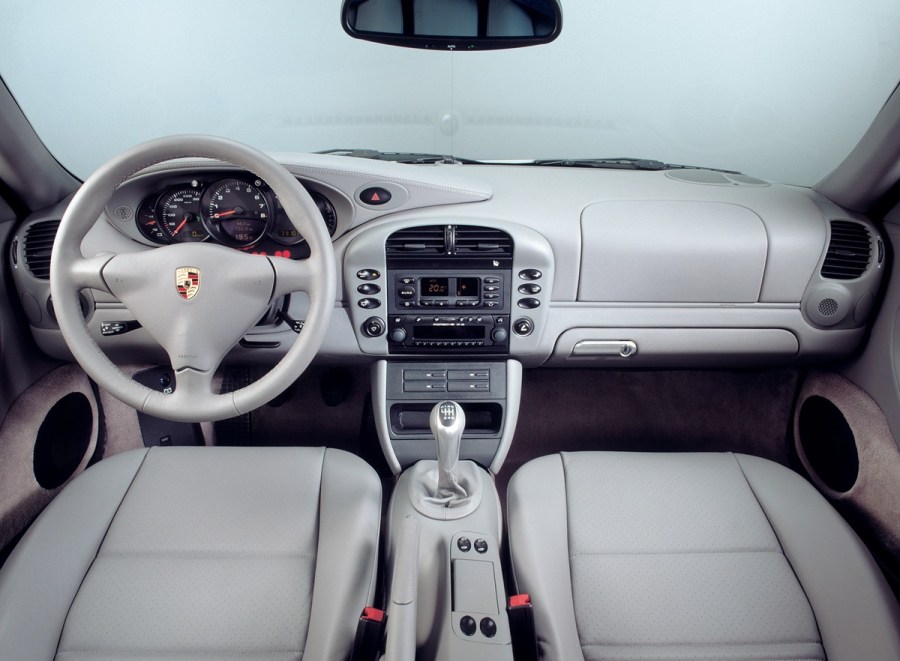
Transmission
The manual and automatic transmissions on the 996 are generally highly reliable. Both should change gear smoothly and without any hesitation. The auto transmission can be scanned for faults but rarely has issues. Fluid services can be performed on both transmissions and the duration of the time interval is quite high. Look for previous indications this has been done or understand where the car is in terms of time related fluid changes for the transmission. Typically, problems with the automatic transmission usually spell replacement, which is far from cheap!
The standard clutch can last up to 100k miles, but greatly depends on how the car has been driven, so check for signs of slipping or juddering on the test drive, as this can indicate a worn or contaminated clutch plate. Prolonged driving with a slipping will also damage the flywheel, which can cost upwards of $700 / £680 in parts alone.
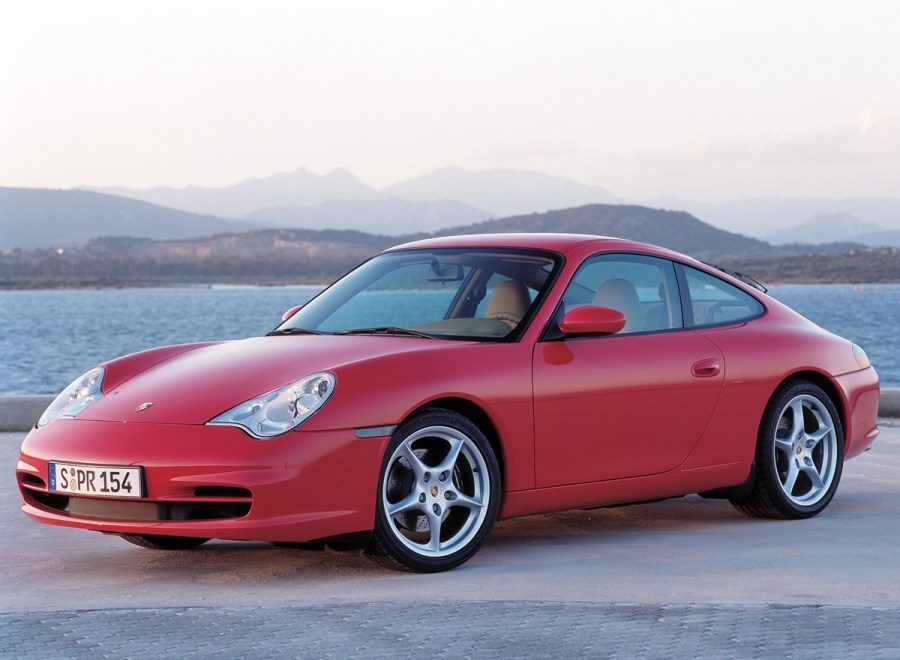
Chassis
Suspension
The 996’s suspension is top notch, giving a controlled and sporty ride that is well suited to our less than perfect road surfaces. Naturally, components such as the rubber bushes can perish over time, leaving the handling a little vague or sloppy. This can often be felt in the test drive or by visually inspecting the tires for any uneven tread wear. While you’re down there, have a peek under the arches and see if you can spot any signs of oil weeping from the dampers. Also, listen out for any squeaks, or clunks as you drive over uneven roads or bumps and ensure the car travels straight when on flat roads, as any veering to the side could suggest that the geometry is out of alignment.
Brakes
The brakes on the 996 Carrera are outstanding with four-pot calipers at the front and large drilled discs all round. When buying check the condition and thickness of both the pad material and the discs themselves and see when the brake fluid was last changed, as this should be completed every two years regardless of mileage. Worn discs can also deteriorate and crack, so look carefully between the drilled holes to see any sign of micro cracks between the holes. It’s recommended to change both discs and pads at the same time, and this can be quite expensive (around $650 / £600 for each end), so be wary of any seller that has only done one or the other and not both.
Wheels
As standard 996s come with either 17 or 18in alloy wheels with staggered widths that are wider on the rear. Check all wheels carefully checked for signs of kerbing or damage, which could indicate a careless owner. It’s important that tires are Porsche N-rated types and these include Michelin, Pirelli, Continental and Bridgestone. You’ll see the N-number embossed on the tire sidewall as N1, N2, N3 etc. depending on the version number produced by the given manufacturer.
Tire costs depend on sizes, but typically a pair of front tires for a 996 Carrera 4S (225/40ZR18) might cost $350 / £300 while the rear 285/30ZR18 pair perhaps $450 / £400. The front tires wear faster on a C4 than a C2, but typical life might be 15-18,000 miles. Whichever tire is fitted, check there is plenty of tread depth that is equally worn across the tire’s surface on all four wheels, as this can often indicate that the owner has not skimped when it comes to regular maintenance such as alignment and tire replacement.
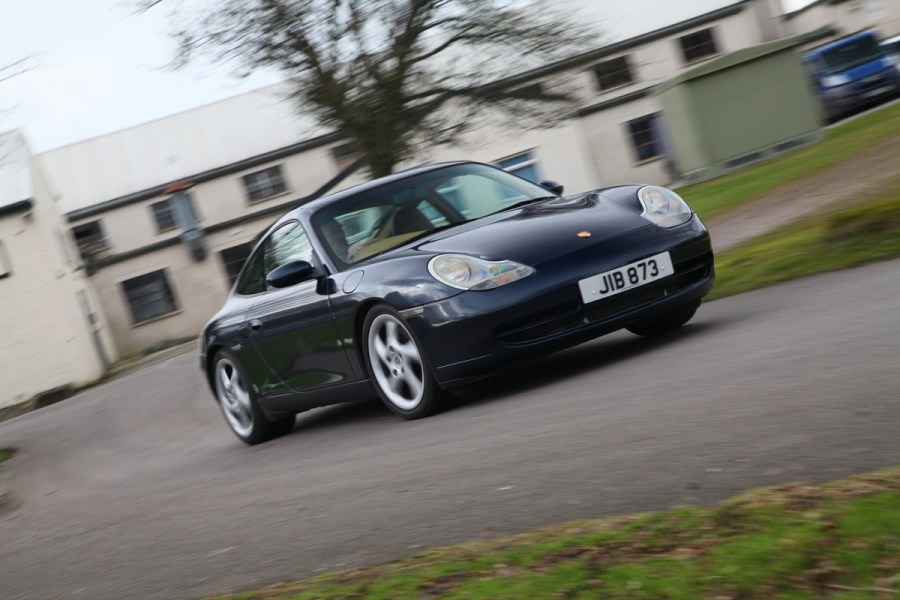
Prices
Ok then, so we’ve been touting the 996 Carrera as an affordable way into 911 ownership, but what does that really mean? Well, in the States, you’re looking at starting prices of around $20,000-$22,000, but that figure can rise as high as $40,000 depending on trim level, condition, mileage, and all the usual contributing factors. In the UK, you can pick up a 996 for as little as £12,000, but the top end of prices pivot around a similar £40,000-£45,000 region. So, admittedly, I wouldn’t exactly call these cars ‘cheap’ for the everyman, but we’re talking about a Porsche 911 for the sort of money you’d pay for a regular hatchback if you chose to buy new.
Which one should you get?
The main aspect dictating your choice of 996 will obviously be your budget, as some models are simply much more affordable than others with an early pre-facelift Carrera 2 with Tiptronic automatic transmission and the 3.4-litre engine representing the lowest price of entry.
But if budget isn’t an issue, you might also be led by your previous driving experience. For drivers new to Porsche and stepping up from a premium saloon or hot hatch, the option to have the security of four-wheel-drive might lean you towards the Carrera 4, as it certainly is more planted and a better option for all-season driving. Alternatively, those that want the old school thrills of a rear-engined rear-wheel drive machine, then a late model 3.6-litre Carrera 2 will provide that in spades.
For me, the 3.6-litre ‘facelift’ Carreras represent the best buys, for their slightly higher power outputs and much improved refinement over the early cars. Most sought after is the C4S, as it has the Turbo’s ‘big red’ steel brakes and that more curvy Turbo-style body. Ideally with a manual gearbox too. So, if funds allow, that’s the one you want.
Words by Dan Sherwood.

